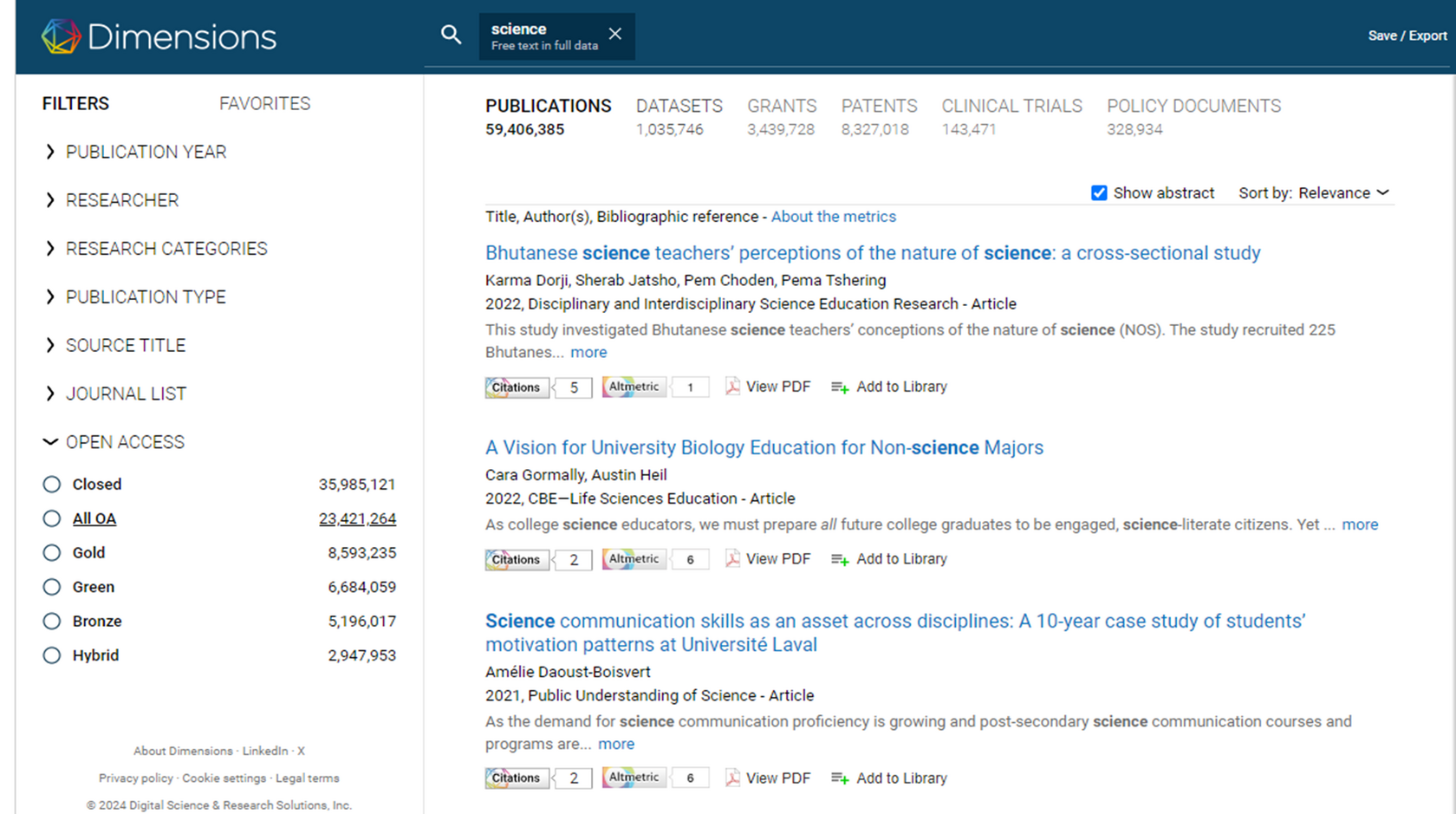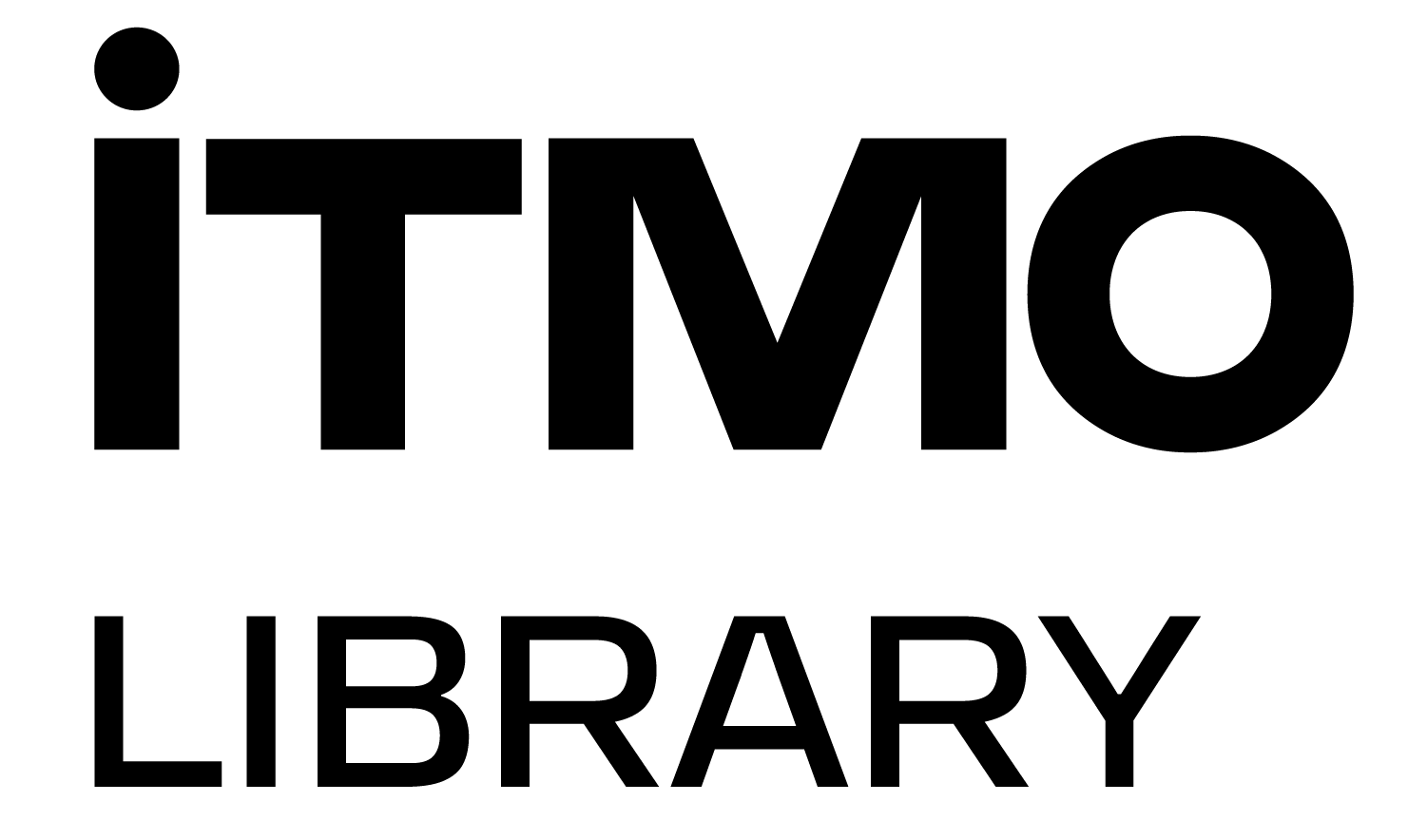We continue writing about Open Access papers. From the message below you will learn about the types of access to the documents you can find in databases, the types of open access and the ways to distinguish them. You will know what the types of access depend on and what signals you should look out for to be sure that you can get the full text of a paper. We will also consider the interaction between the author and the publisher, which is crucial for the future of research in academic society.
How can the type of access to a paper be labeled in a database
Many databases make it possible to filter open access resources into one large category that the user can refer to directly when searching. They can further work directly with the resources that the vendor provides free of charge. This is convenient when a researcher accesses the database to which they are not subscribed, and therefore all other content is unavailable to them.
This type of filter might look as follows:
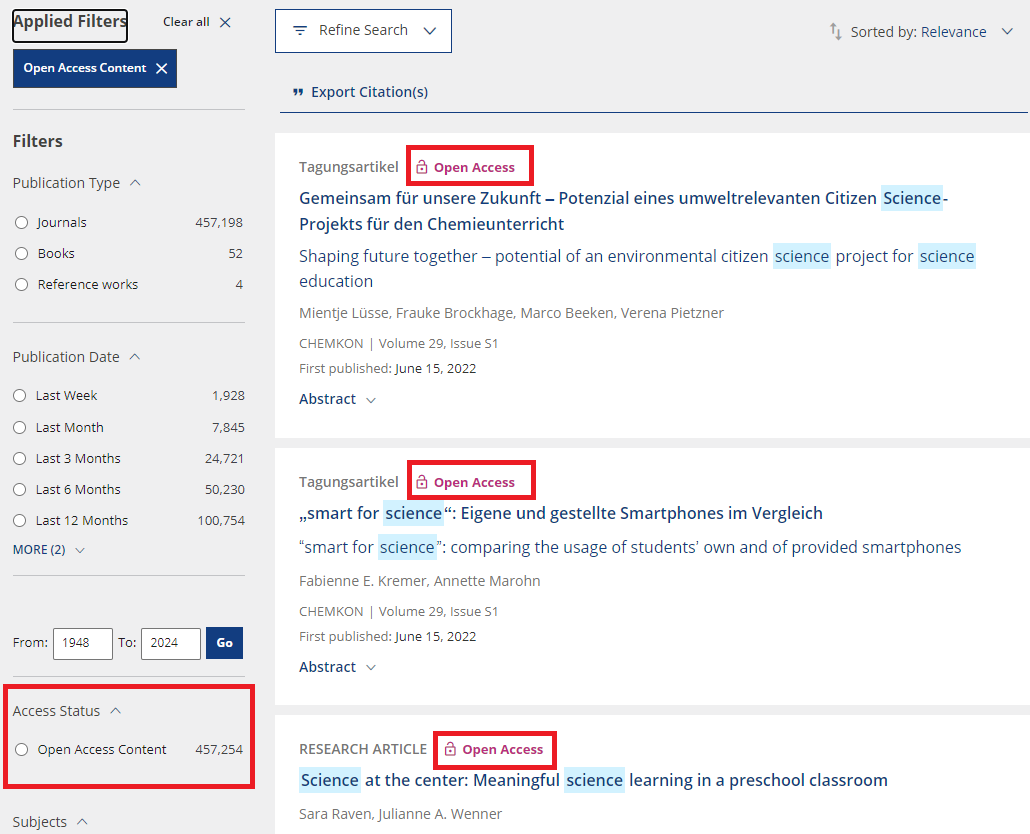
The type of access to the document is usually indicated right next to the link. Let's say you have a subscription to a resource, but it covers only several collections. So, when searching, you have to somehow understand which documents are available under your contract, which of them are open access and which ones are not available at all.. Sometimes publishers temporarily provide free access to some papers that are normally in the fee-paying segment, and this is also usually highlighted with a special label.
In the picture below we demonstrate how access types are designated in the Wiley Journal Database. The Full Access mark indicates that the paper is included in the subscription. Documents that are publicly available have the Open Access label. The Free Access label reports that the publisher has provided free access temporarily.
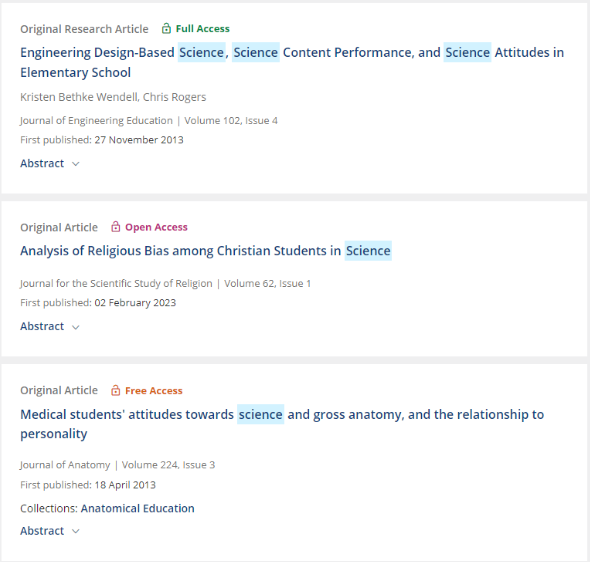
Each database chooses its own system of labeling. The notation is usually intuitive, however, there are some important differences. For example, the absence of any label in one database may mean that the paper is unavailable (as in the Wiley Journal Database), whereas in another one it would report that access is provided by subscription (as in INFORMS PubsOnLine).
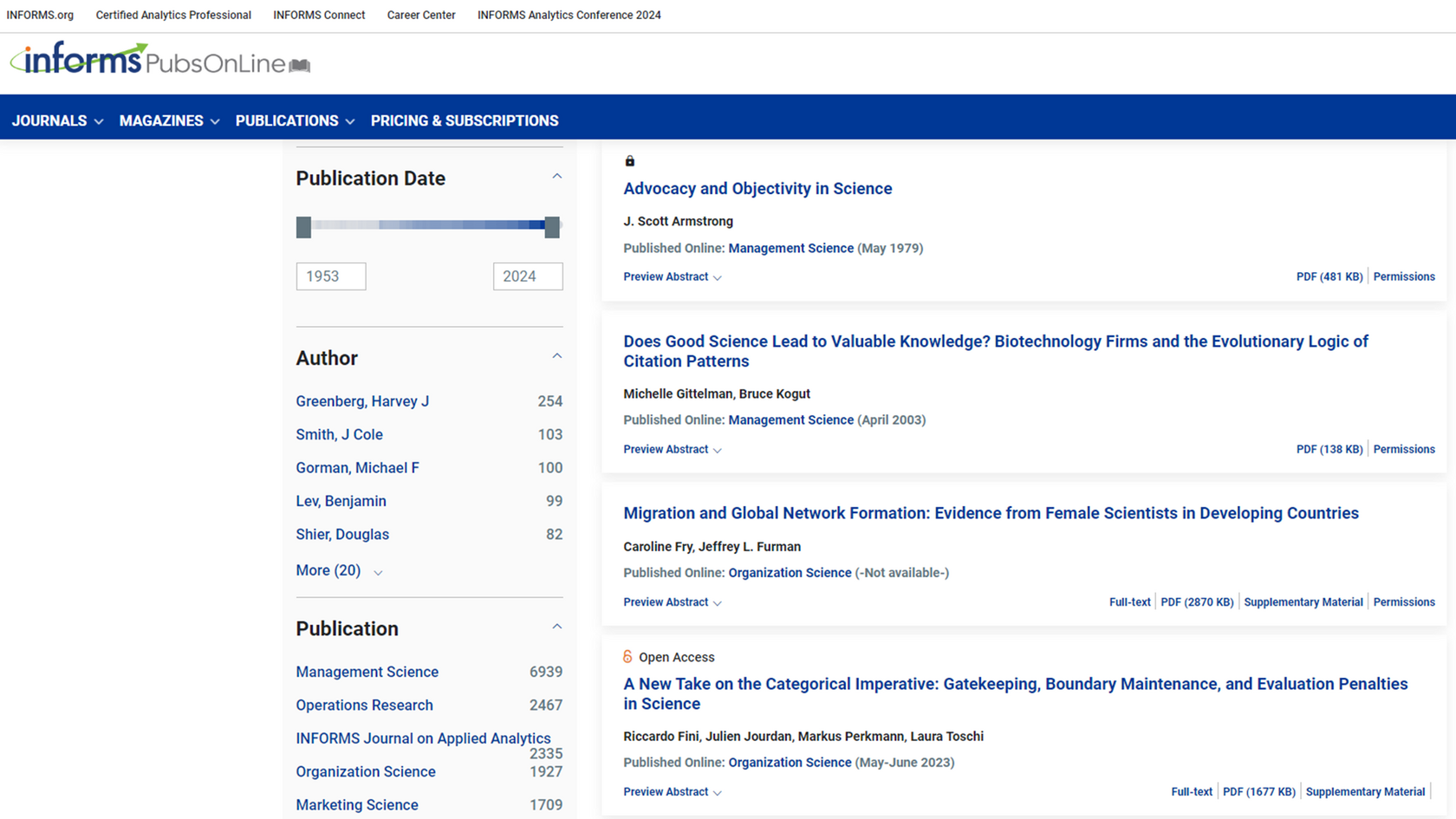
Types of Open Access
Open access has various types as well. In some databases you can see the following designations:
- Gold - the publisher provides access to the final version of the work, available for reading and downloading. In most cases, this means that the publication has been paid by the author.
- Bronze - the full text is available for reading, but cannot be copied or downloaded.
- Green is used primarily for archives, repositories, authors' personal pages, where the researcher uploads the paper by agreement with the publisher in the form of a preprint (добавить ссылку на англ. статью о препринтах).
- Hybrid - the publisher offers the choice to the author: to publish in the open access for a substantial fee, or for free, however, in the latter case their paper will be available only to subscribers, and the number of potential citations will be lower.
Actually, it is not so important for the user to distinguish the types of open access. This tends to refer to the format of the interaction between the author and the publisher. However, this point is important for the researcher, especially when searching for a potential journal for publication.
Most analytical tools also filter search results by the access type.
